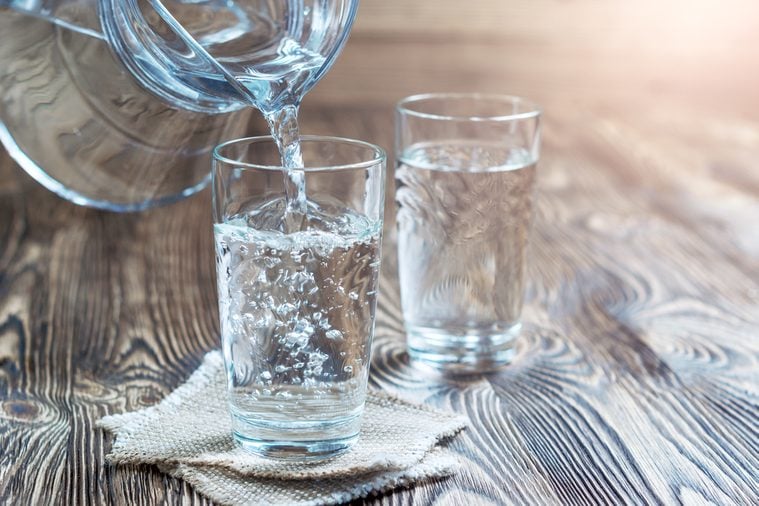This Is How Much Water You Should Really Be Drinking
Updated: Feb. 26, 2021
There's no need to keep a tally to ensure you're drinking the proverbial "eight glasses a day."

Be honest: Do you actually drink eight glasses of water every single day? Would you even know if you did? The truth is, you probably have no idea how much water you drink daily; it’s not something people normally keep careful track of. Even better: You probably don’t have to.
If you’re not carefully monitoring your water intake or living by the “eight-glasses-a-day” maxim, that really isn’t such a horrible health sin. In fact, Healthline claims that “there’s really no science” behind the “completely arbitrary” eight-glasses rule. Different people should be consuming different amounts of water regularly. As a more precise guideline, the National Academies of Science, Engineering, and Medicine recommend that men get a total of 3.7 liters per day and that women get 2.7 liters. That’s 125 ounces, or about 15 and a half cups, for men and 91 ounces, or about 11 cups, for women. Check out these easy ways to make sure you drink enough to stay hydrated.
While this is a good guideline, there’s no need for you to start measuring out your glasses of water every time you have a drink. Ninety to 125 ounces may seem like a lot of water, but you’re probably already getting somewhere in that realm every day already. Your thirst instinct is very reliable, says Neal Schultz, MD, New York City dermatologist and creator of BeautyRx. Rather than counting cups, you should trust your thirst, making sure you’re drinking to quench it and letting your body take care of the rest. “You should drink to your thirst, not to meet an arbitrary number of cups or ounces,” advises Dr. Schultz.
The best way to be sure you’re getting enough water is just to keep an eye on the common signs. As long as you don’t find yourself overly or excessively thirsty, and your urine retains a light yellow color, you’re probably getting sufficient hydration. (Of course, also make sure you’re urinating regularly; going to the bathroom less frequently often means you’re dehydrated.) Be on the lookout for these other, less obvious signs of dehydration, too.
Another helpful consideration is the fact that “water intake” doesn’t necessarily translate to the exact amount of water you drink. Any fluid you drink, be it coffee, tea, milk, et cetera, contributes to your daily intake since those beverages are made up primarily of water. Of course, sticking to water instead of drinking sugary drinks like soda or lattes is still the healthier option, but that’s due to sugar and caloric content, not hydration. (The health myth about coffee dehydrating you is actually false.) And while it might sound counterintuitive, food can actually hydrate you too: Stuff you eat every day, like fruits, vegetables, and soup, contain quite a bit of water. The Mayo Clinic reports that “about 20 percent of daily fluid intake usually comes from food and the rest from drinks.”
Next, find out all the good things that happen to your body when you drink enough water.
